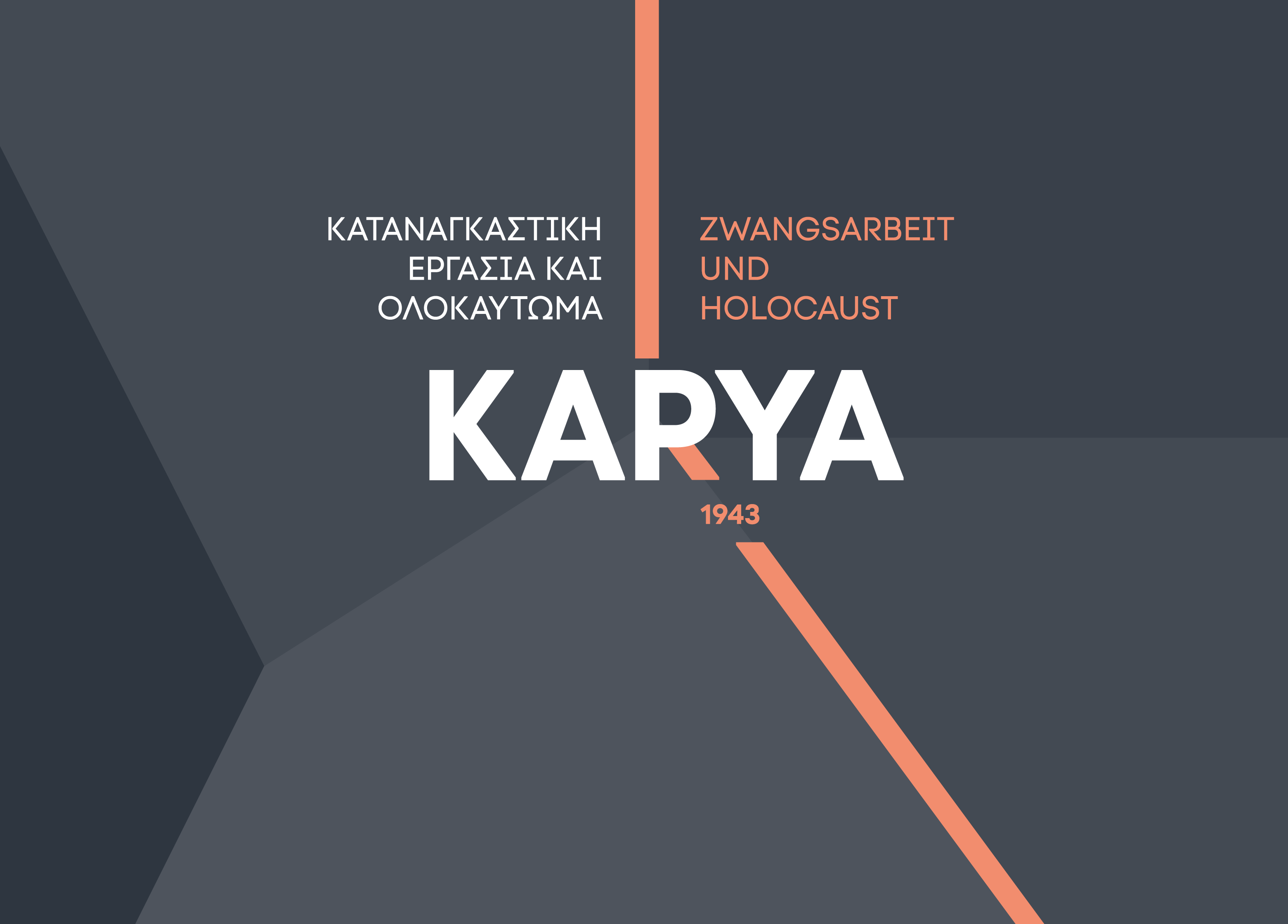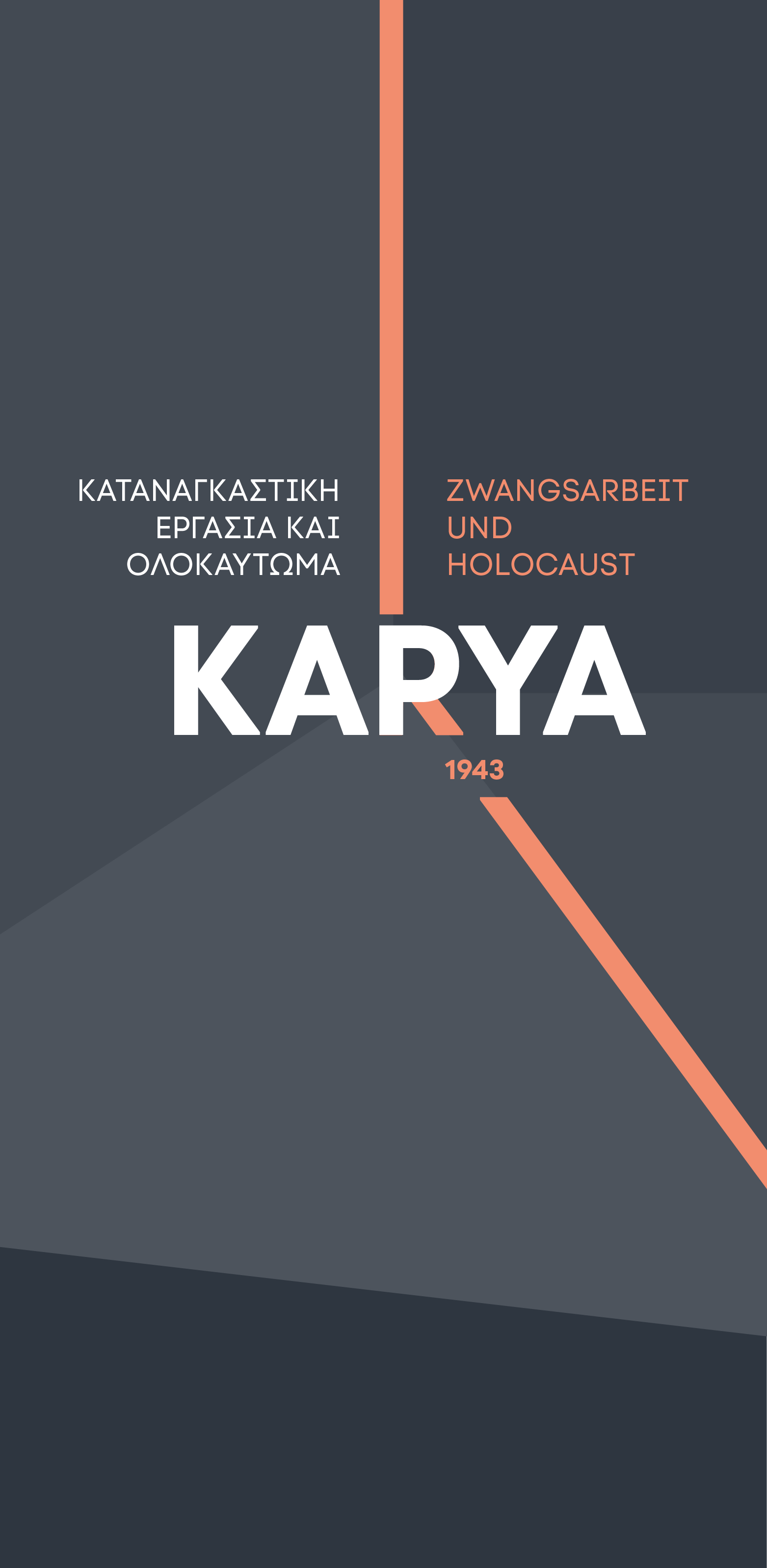In 1943, hundreds of Jewish men were forced to perform forced labour on a construction site in Karya - a small railway station in the region of Phthiotida. It is thanks to Andreas Assael, a researcher, collector and son of a Jewish survivor from Thessaloniki, that this became known. In 2002, he discovered a wartime photo album containing photos of Jewish forced labourers in Karya. The research he subsequently undertakes forms the basis of a travelling exhibition that is on display in Germany and Greece from 2024.
KARYA 1943
Karya 1943
Karya is a small train station in the region of Phthiotida, built in 1906/07. In 1943, the Germans planned to build a passing loop at Karya. The overburdened single-track route was to be expanded; to that end, 300 to 500 Jewish men from Thessaloniki performed forced labour there.
Railway Expansion for Purposes of War
For the Germans, the railway line Athens–Thessaloniki–Belgrade, along which Karya is situated, was the most important link for the transport of troops and supplies. As such, it was often attacked by partisan units hoping to weaken the occupiers. The Wehrmacht responded by expanding the Greek rail network—including Karya—and repairing the damage caused by sabotage.
The Planning
Rössler, a civil engineer, planned the passing loop, which involved cutting a notch approximately 20 meters deep and 100 meters long into a rocky hillside. The goal was to let trains coming from opposite directions pass each other on the single-track railway, thus increasing the number of trips that could occur simultaneously.
Organisation Todt
The expansion was undertaken by Organisation Todt (OT), Nazi Germany’s paramilitary construction group. During World War II, OT carried out all militarily important construction projects. They relied on private German and Austrian firms, which used both non-Jewish and Jewish forced labourers. One of these firms was Überland Civil Engineering and Road Construction, founded in 1928 in Vienna, whose parent company was the Munich firm Leonhard Moll.
Forced Labour in Greece
OT used both Jewish and non-Jewish forced labourers for their construction sites in central Greece. These labourers expanded transport routes and repaired damage caused by sabotage. As the need for workers increased, in March 1943 OT requested 3,000 Jewish forced labourers from Thessaloniki. The SS arrested hundreds of Jewish men and sent them to forced labour camps in Thiva, Lianokladi, and Karya. There were also non-Jewish forced labourers in Thiva and Lianokladi. The Jewish forced labourers were treated considerably worse than the non-Jewish ones.
The Setting Up of a Camp in Karya
At the end of March and on April 20, 1943, Jewish men only were sent to Karya—altogether between 300 and 500 of them. To run the construction site at this remote location, OT set up a camp: at the passenger train station, they constructed two makeshift buildings with offices and a kitchen for members of OT and the Wehrmacht, in addition to barracks for the forced labourers. Train traffic continued as usual during this period of forced labour, so that passengers could see the construction site and the Jewish labourers.
The Company behind the Forced Labour
“Extermination through Labour”
OT wanted the passing loop in Karya to be built as quickly as possible, and went about it ruthlessly: OT members and overseers pushed the Jewish forced labourers to work extremely hard. In 12-hour shifts, they had to remove the rock with pickaxes and shovels. Brutal foremen and overseers beat them. They were given little water and hardly any food—and what they did receive was often spoiled. Within a few weeks, the workers became emaciated. Those who broke down from exhaustion were shot to death by the OT men.
Who Survived?
At least ten Jewish forced labourers were able to flee from the construction site in Karya. Most of them joined resistance groups in the area and fought against the German occupiers. Sam Nachmias was able to survive thanks to the help of a courageous family in Lamia. Only those who were able to survive could talk about what happened in Karya. Their testimonials are today an important resource.
Dismantling the Construction Site
At the beginning of August 1943, OT dismantled the construction site in Karya. The surviving forced labourers were brought back to Thessaloniki. On August 10, 1943, the SS transported them to Auschwitz. Most of the men were emaciated and ill, and were murdered shortly after their arrival; but the SS sent on 271 of them to labour camps. In October 1943, Jewish concentration camp prisoners from Thessaloniki, including survivors of Karya, were transferred from there to other camps.

















